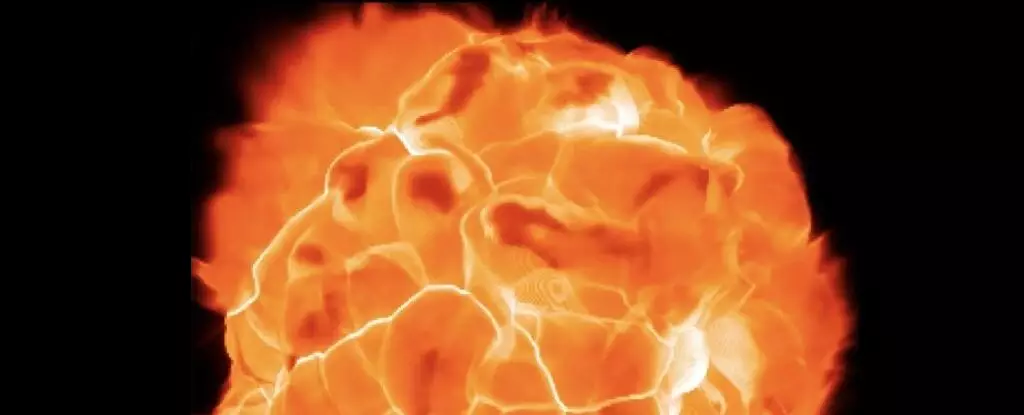Betelgeuse, also known as Betel-gurz or Beetle-juice, has long been a favorite among amateur astronomers. This red supergiant variable star, located in the constellation Orion, has captured the attention of sky gazers for its unexpected dimming in recent years. With a radius approximately 1,000 times that of the Sun and situated at a distance of 642 light years away, Betelgeuse shines brightly in the night sky, emitting about 100,000 times more light than our own Sun.
One of the most intriguing aspects of Betelgeuse is its variability, with one of its cycles occurring over a 2,170 day period. This extended pulsation period, known as the Long Secondary Period (LSP), has puzzled astronomers for years. The dimming of Betelgeuse towards the end of 2019, followed by a return to normal brightness in the first half of 2020, has been attributed to a dust cloud event dubbed ‘The Great Dimming.’
A recent paper suggests that Betelgeuse’s long-term variability may be due to the presence of a companion star named Ori B. This low-mass companion, with a mass of 1.17 solar masses, could potentially orbit Betelgeuse at a distance of 2.43 times its radius. The modulation of dust in the region by Ori B during its transit could explain the variations in brightness observed in Betelgeuse.
The discovery of a companion star as the potential cause of Betelgeuse’s variability has significant implications for our understanding of this stellar giant’s evolution. If confirmed, Ori B could shed light on the mysterious Long Secondary Period and offer insights into Betelgeuse’s future. While Betelgeuse is expected to go supernova in the near future, the presence of Ori B as the variable star’s modulating factor suggests that this cataclysmic event may be further off than previously thought.
The enigma of Betelgeuse and its unexpected dimming continue to captivate astronomers and stargazers alike. The potential role of a companion star in modulating the dust surrounding Betelgeuse offers a new perspective on the variability of this red supergiant. As research and observations on Betelgeuse evolve, new discoveries may further unravel the mysteries of this iconic stellar phenomenon.

Leave a Reply